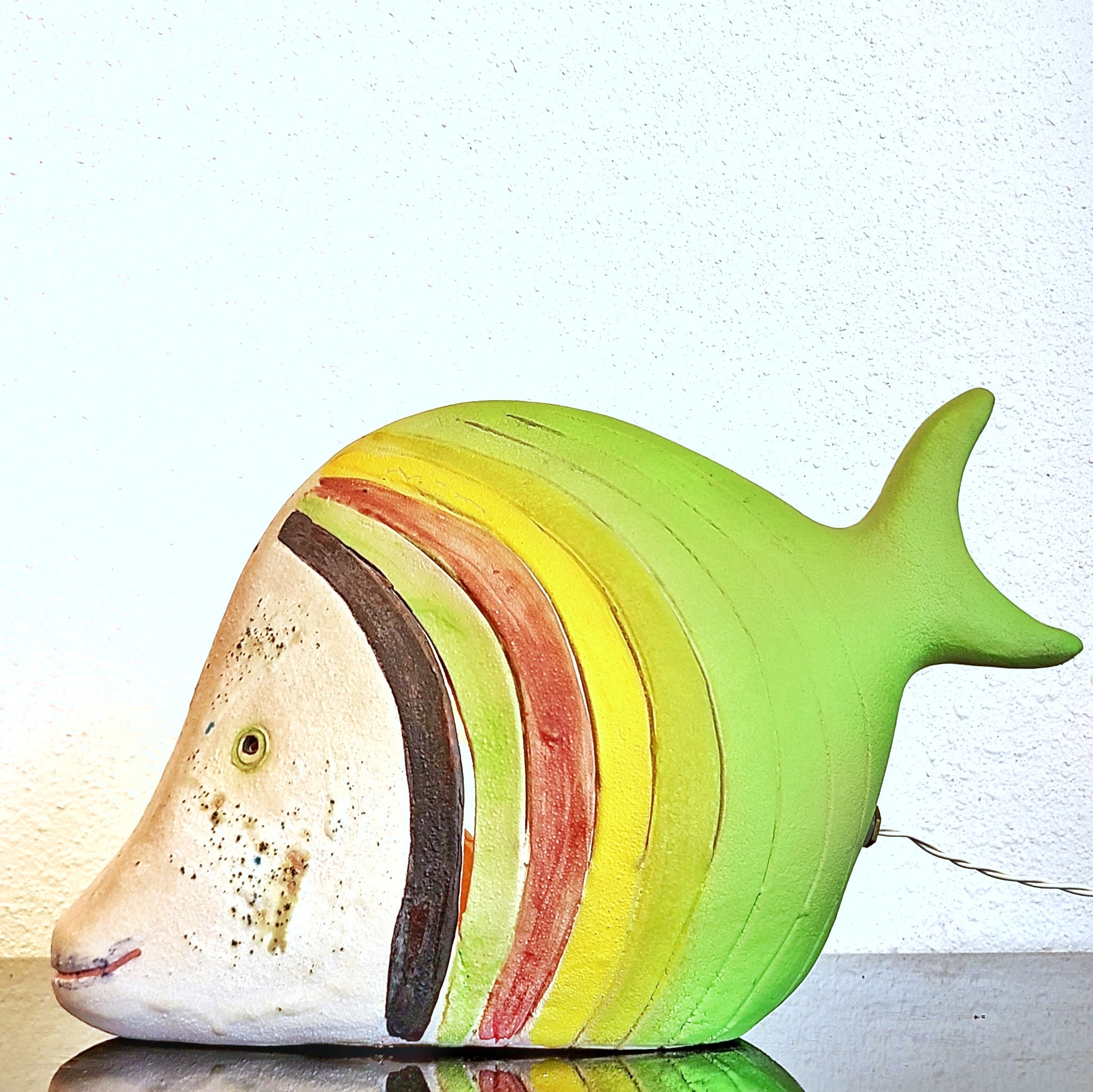
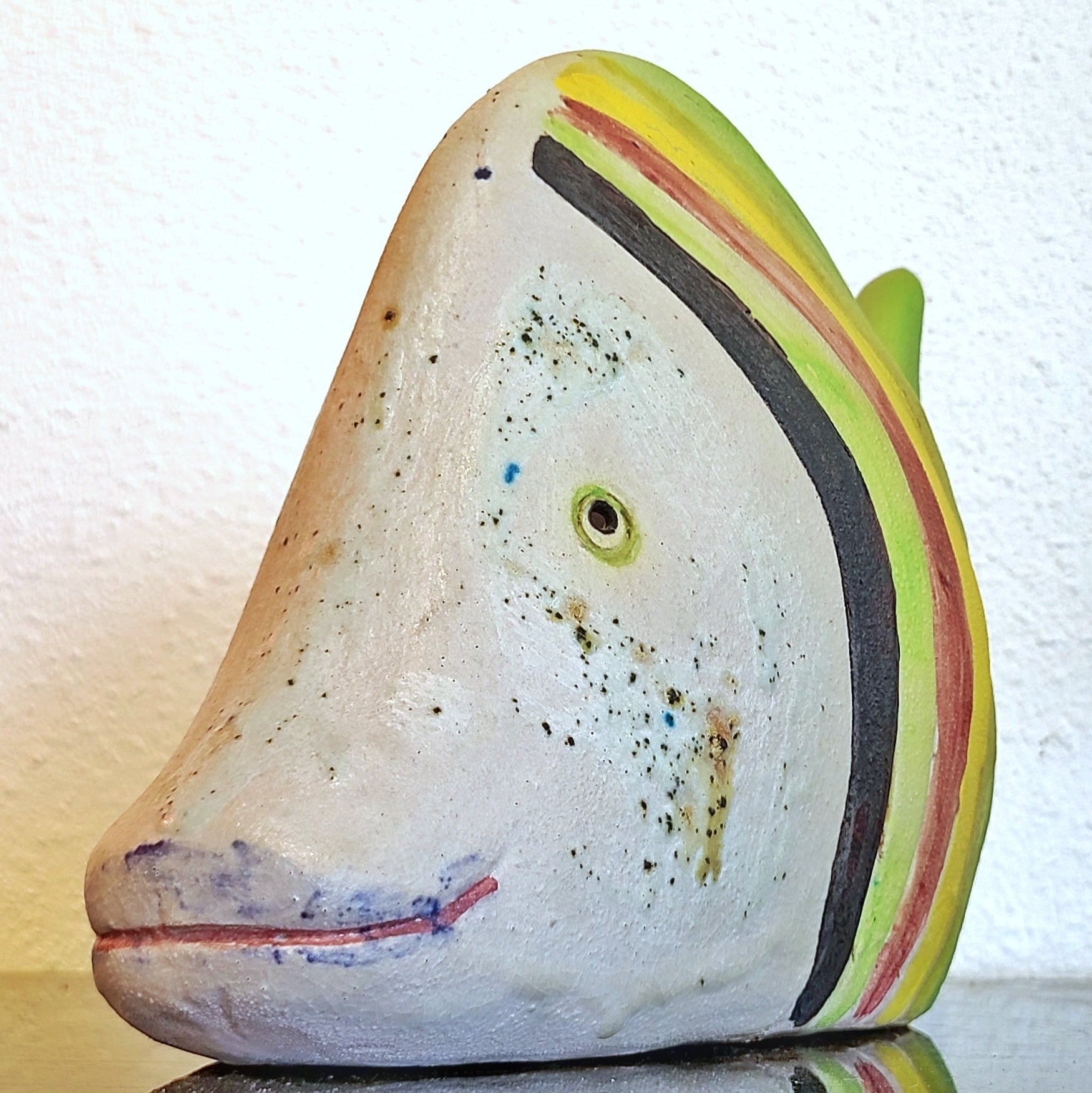
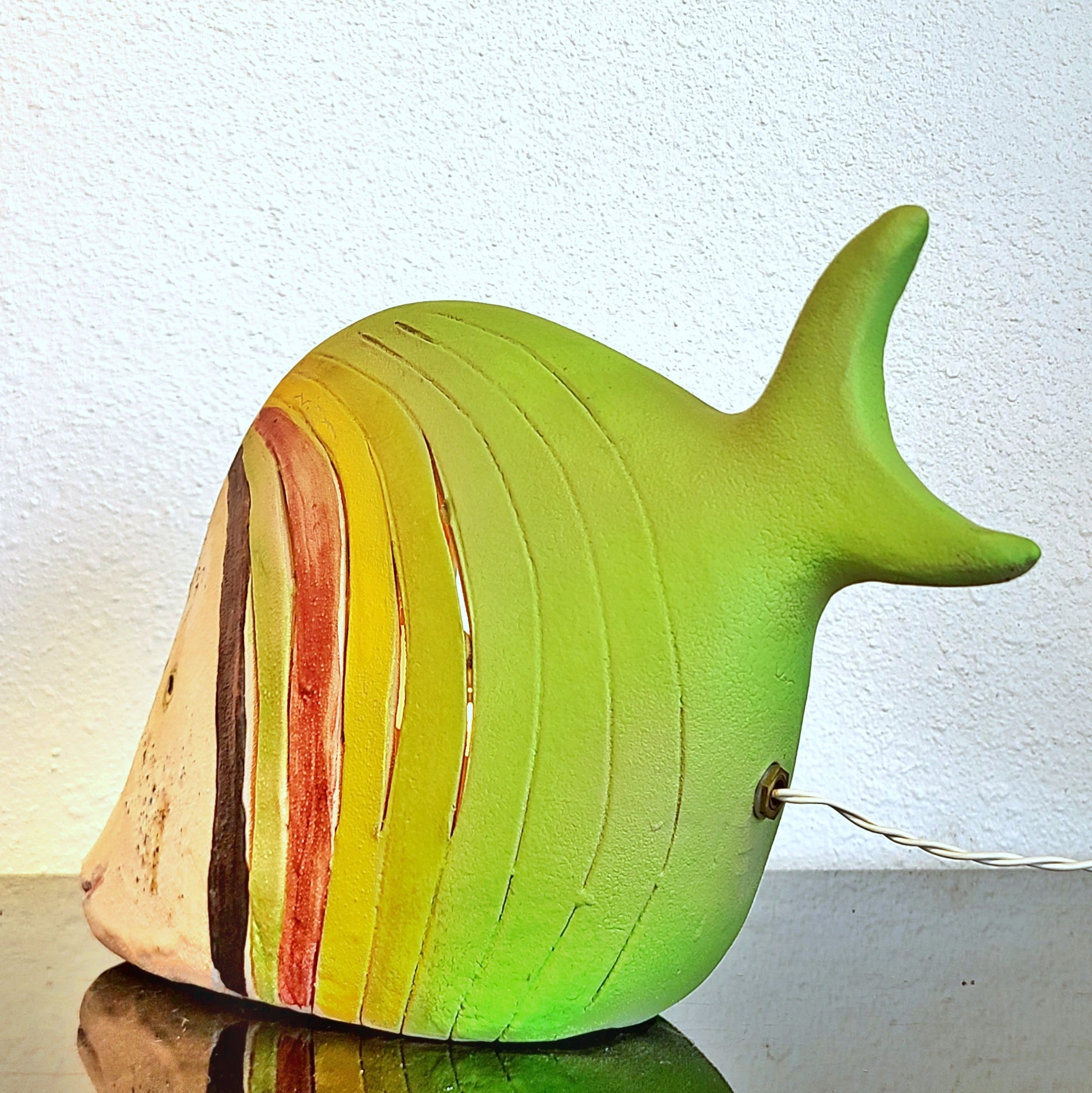
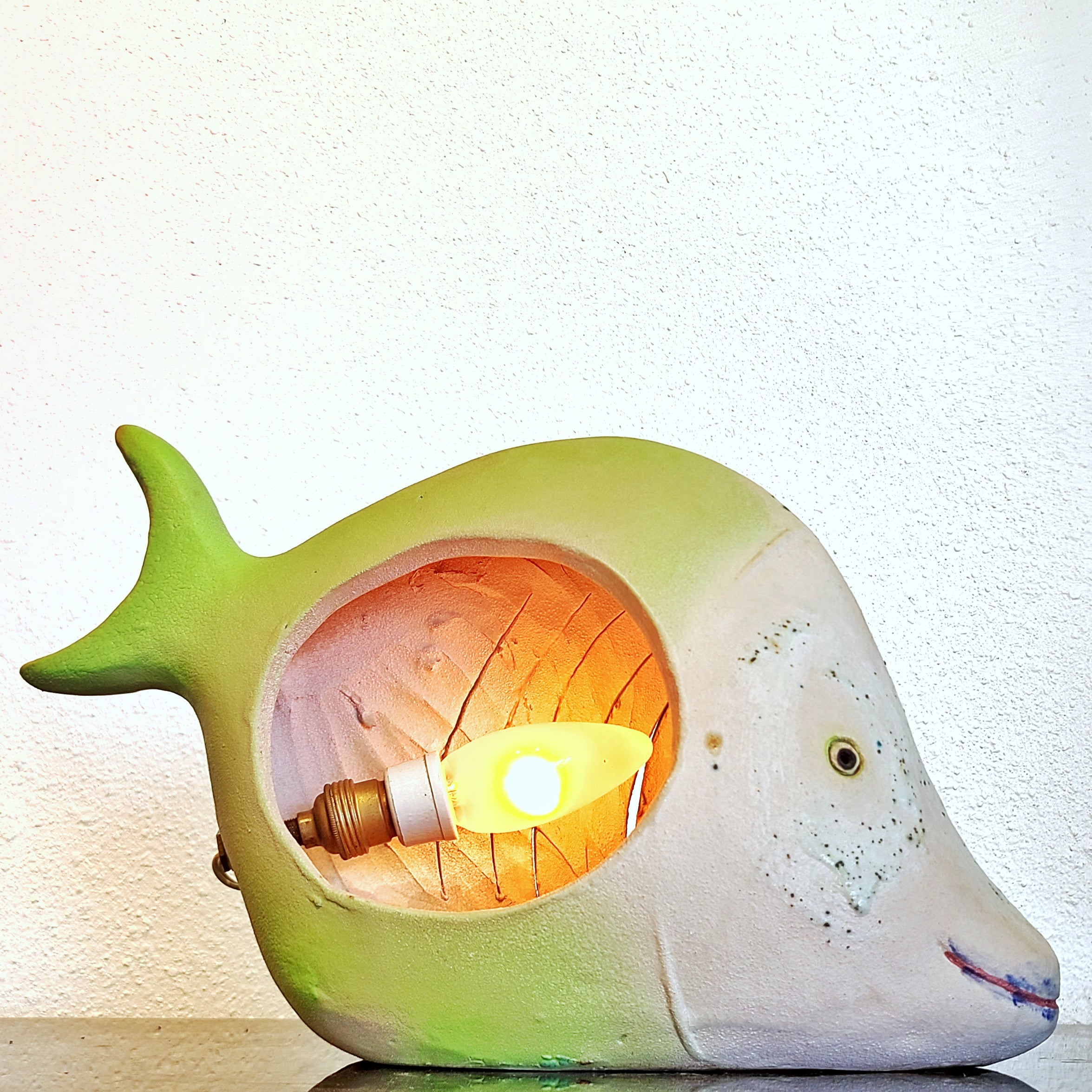
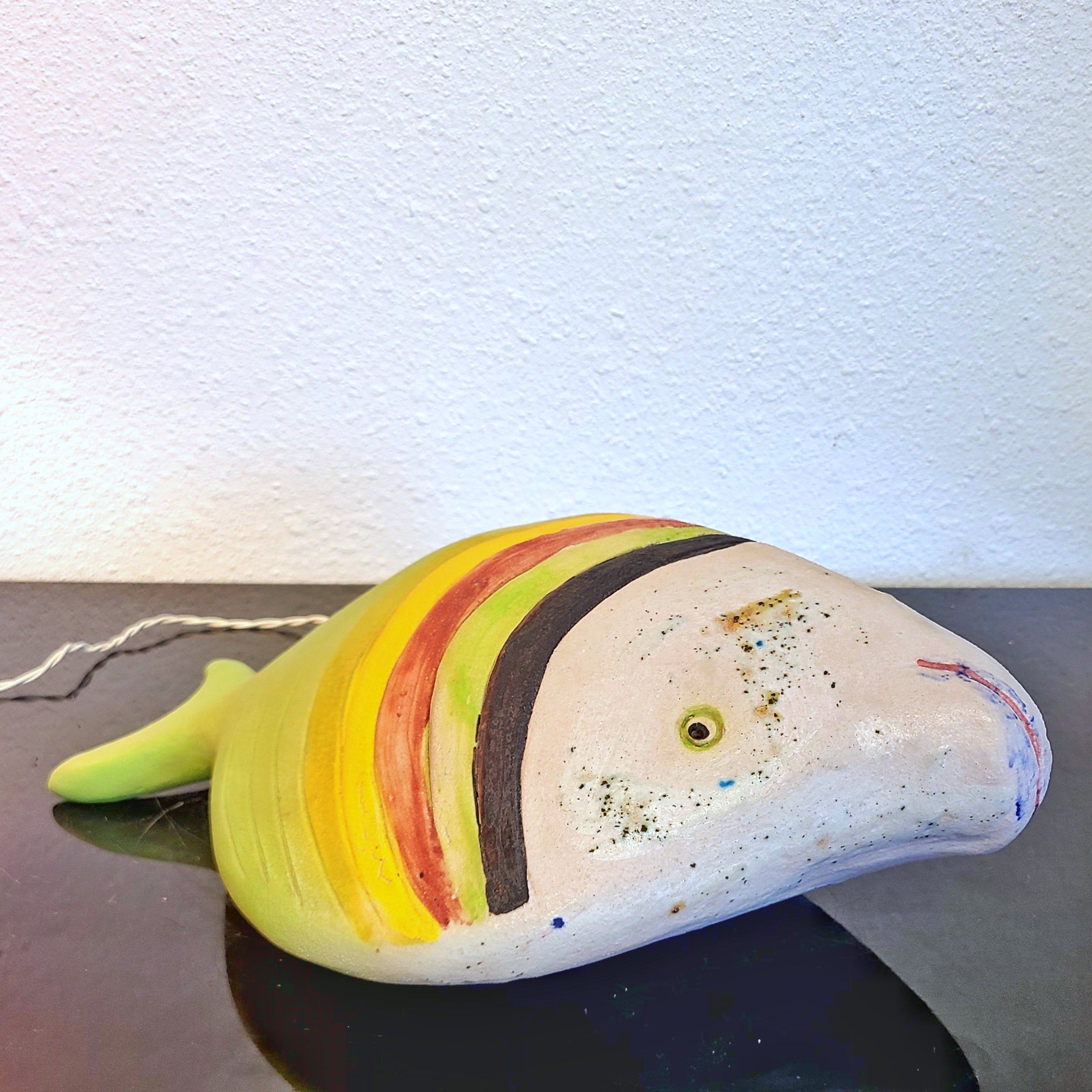
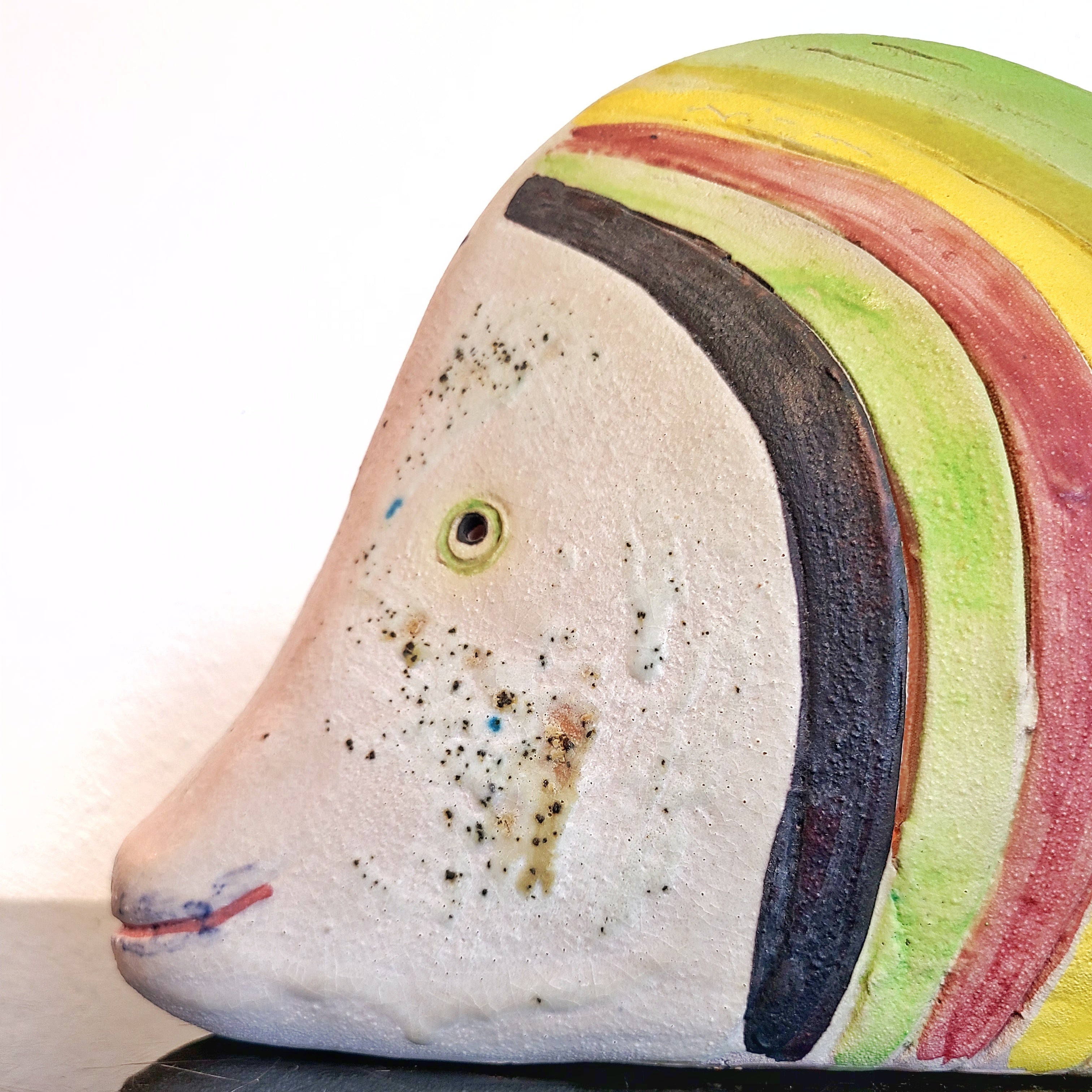
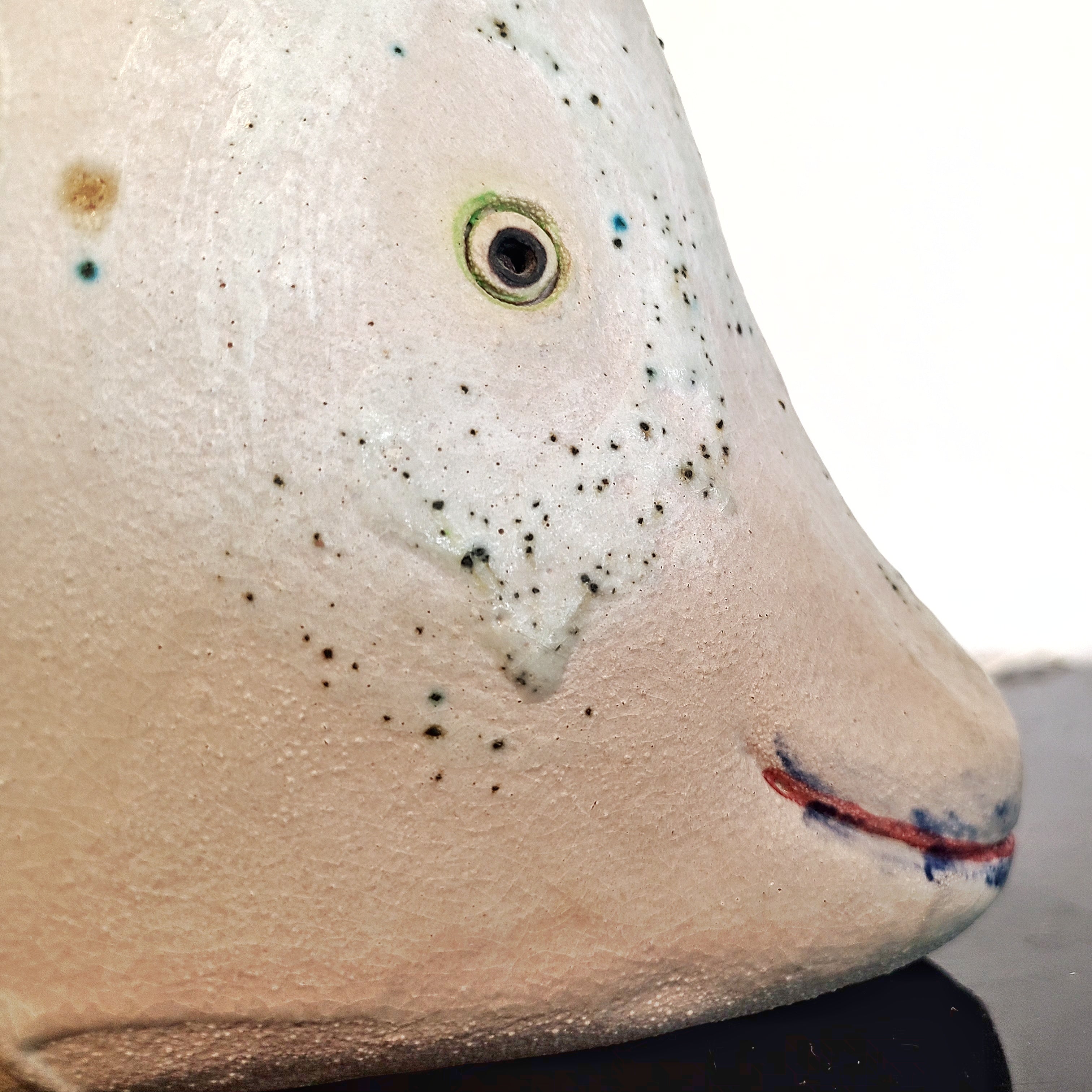
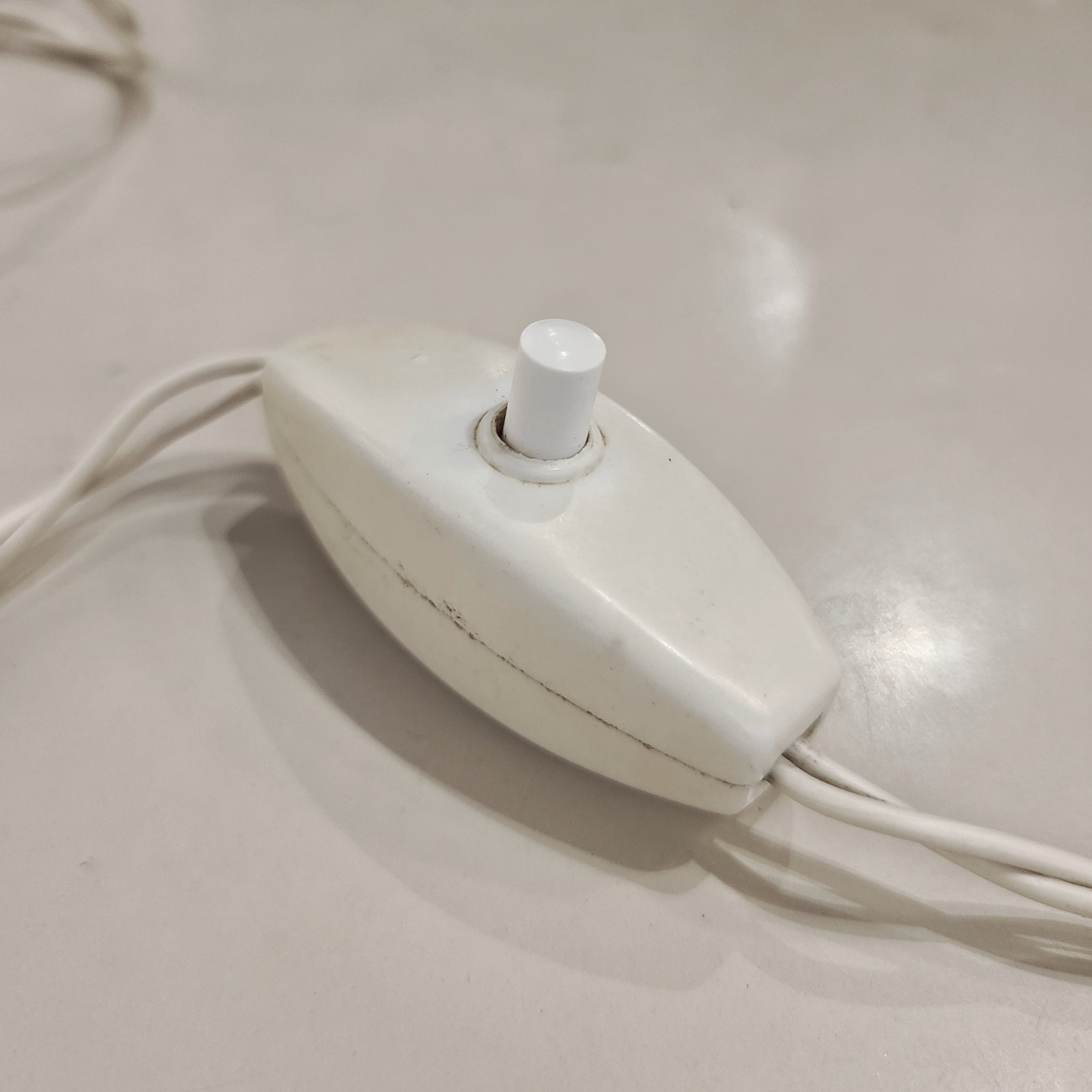
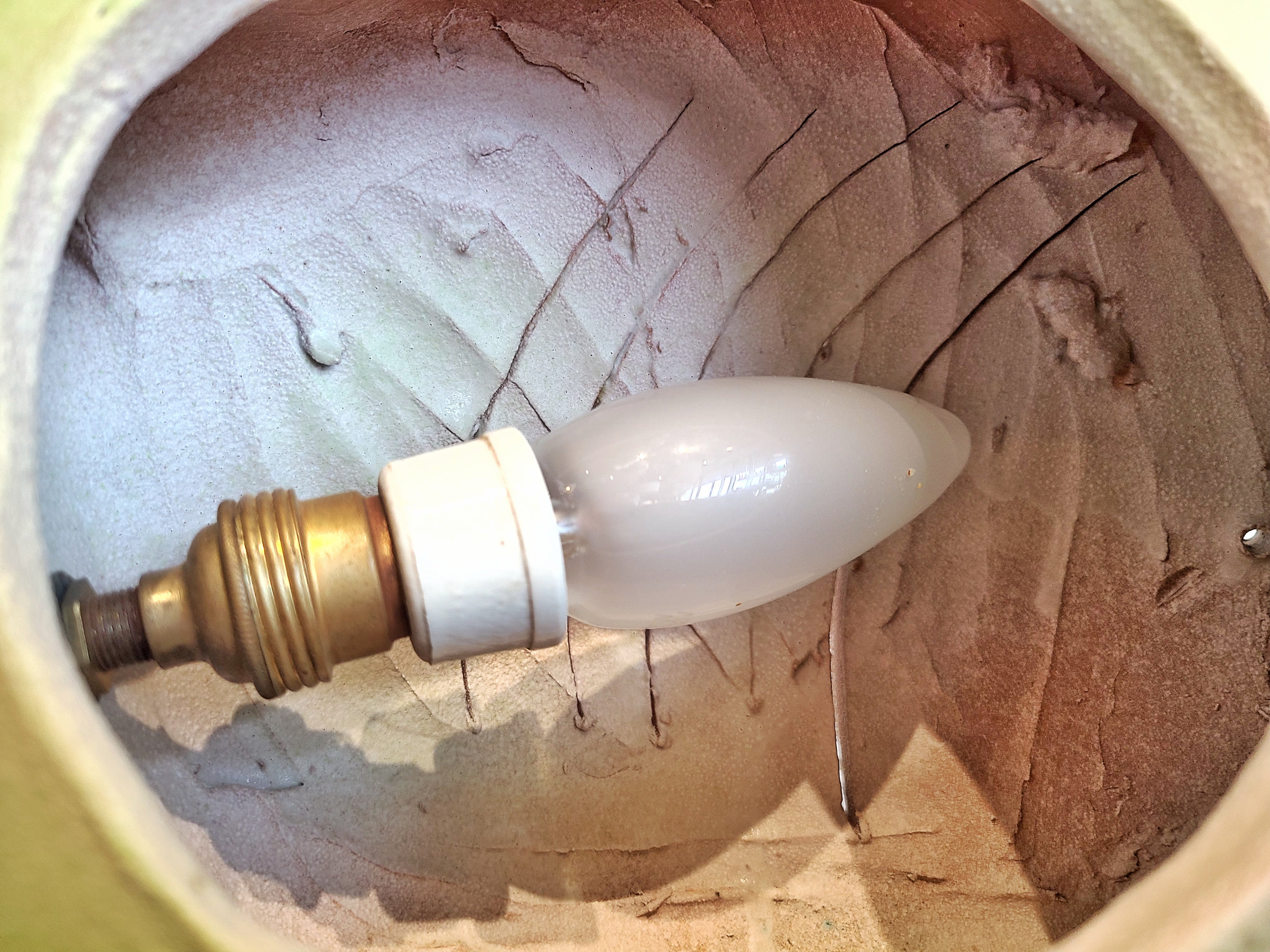
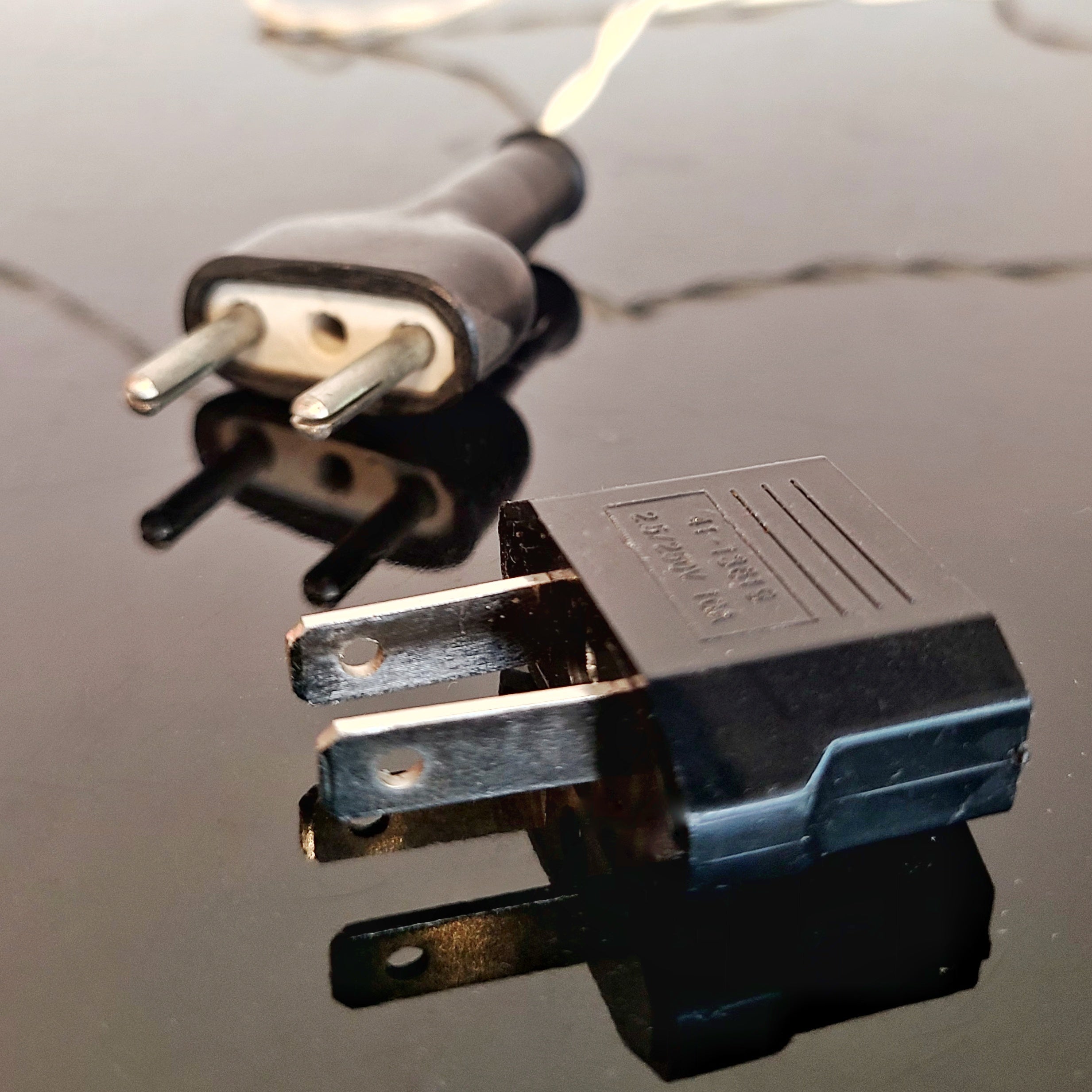
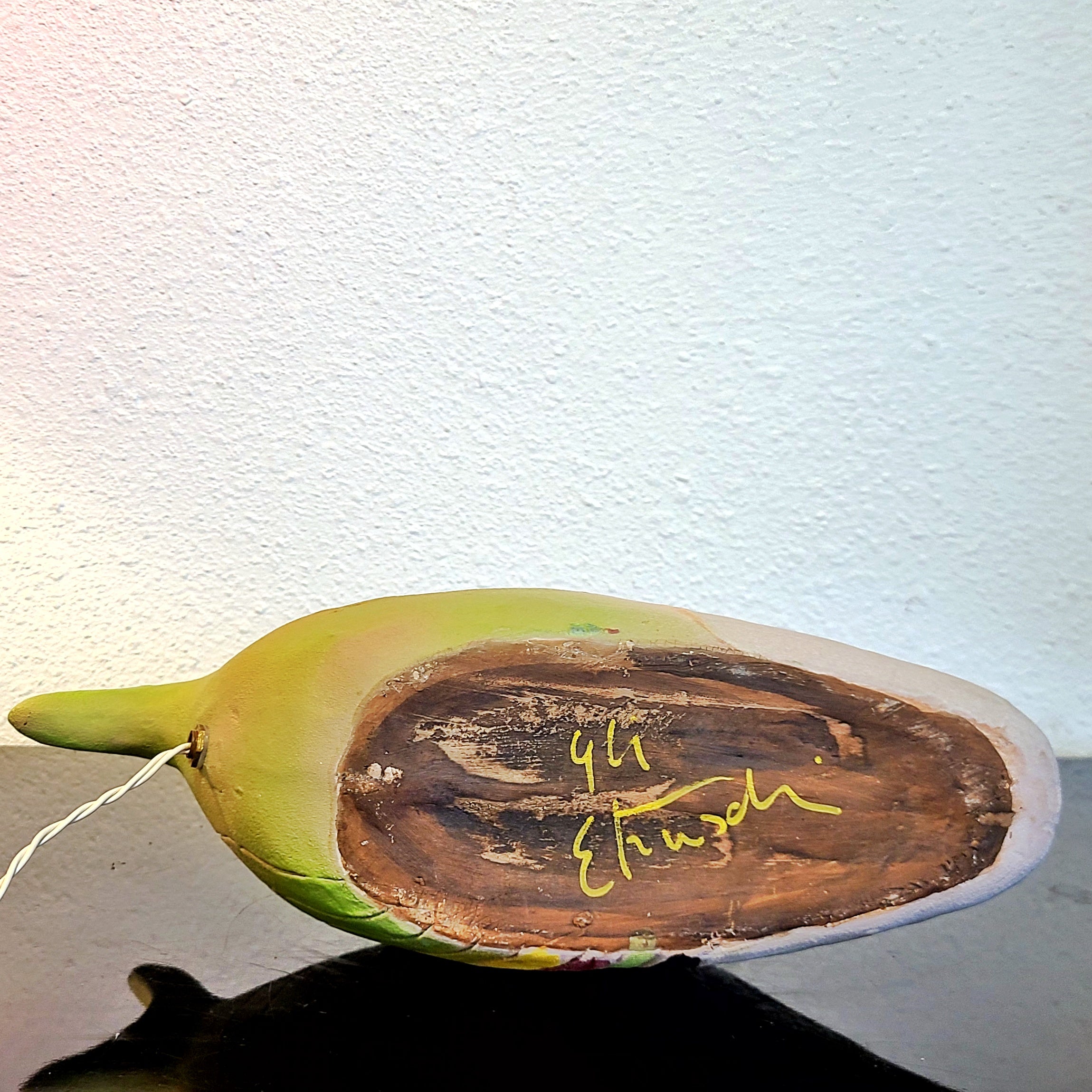
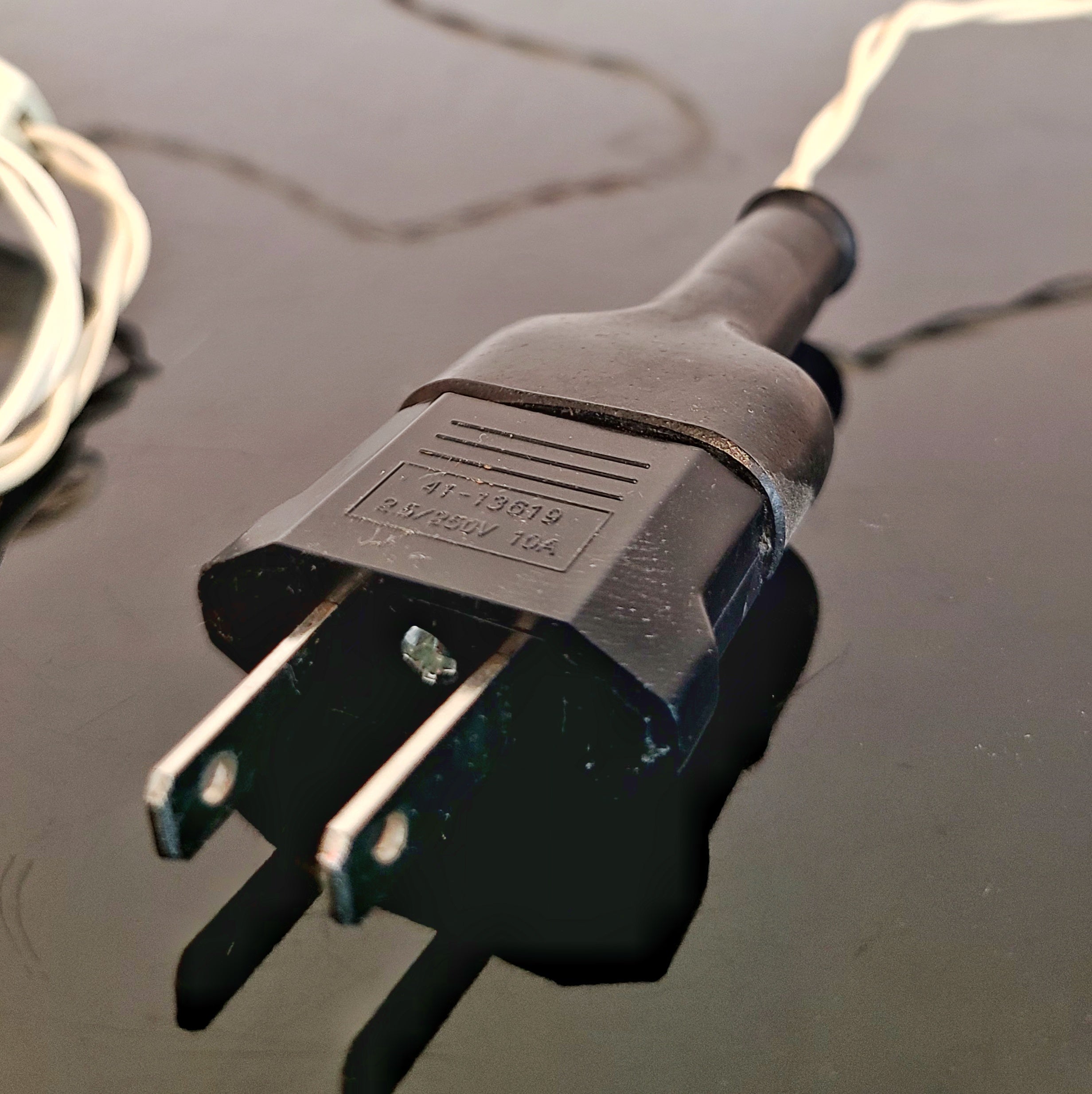
UNUSUAL FISH-FORM TV LAMP BY IVO DE SANTIS FOR GLI ETRUSCHI
CONTACT US HERE ABOUT THIS ITEM.
A rare, hand-painted television lamp from Ivo de Santis of GLI ETRUSCHI. A playful encounter between De Santis’ eccentric Italian style—itself an amalgam of the traditional and the modern—and an all-American form. Secondary illumination emerges through the gills and eyehole to illuminate the fish’s jolly stripes and freckly face. The original European two-prong plug is retained; a US adaptor is furnished.
IVO DE SANTIS opened his Tuscan pottery studio in Florence in the early 1950s. Very little is known about his biography—or indeed about the history of the workshop, which, presumably in a nod to his heritage, he named GLI ETRUSCHI (the Etruscans). It seems fairly certain that the bulk of its output was exported, as it is unusual to find GLI ETRUSCHI items in Italy. The work of de Santis became very popular in the US in the 1960s and was widely distributed by the American importers Raymor and Rosenthal-Netter. His artistry quickly became well-known for its bold and quirky creativity.
The products of GLI ETRUSCHI were exclusively hand-built and generally fell into three main categories: small figurines, animal and human; slab-built and wheel-thrown vessels (often altered or combined); and whimsical objets d’art, sometimes decorated with implanted metal wires and dripping in acid-colored glazes (often in striking combinations) or muted pastels. The pieces were rarely signed and were mostly labeled with foil stickers, few of which survived. Happily, de Santis’s creations are readily recognizable by their distinctly original style.
De Santis was a friend of Marcello Fantoni (1915-2011), and his pottery compares favorably with that of his fellow Florentine master as well as with that of their Italian contemporary, Guido Gambone (1909-1969). Equally inspired by ancient Etruscan forms and mid-20th century art styles—particularly abstract expressionism, pop, and color field painting—it was de Santis’ genius to combine these influences, producing ceramic artworks that were all his own.
TV LAMPS are iconic luminaries of the 1950s and early 1960s. The fad for them only lasted about twelve years, but during that time thousands were produced by ceramics manufactories all over the US and Canada. North Dakota’s Rosemeade Pottery, best known for its salt and pepper shakers depicting native wildlife, made some of today’s most collectible ones. A particularly excellent example of their rooster lamp sold for a staggering $3550. They also released TV lamps in panther, horse, pheasant, deer, and wolf form—all of which are likely to bring at least $1000 at auction.
The earliest examples of TV lamps date from about 1950, when television sets were establishing their presence in North American households. The lamps were specifically designed to cast light on the wall behind them rather than providing general room illumination. The traditional explanation for the purpose of TV lamps is that they were intended to protect the eyesight of the viewer. The (admittedly pseudo-scientific) thinking went that the strong contrast between the light emanating from the TV and the room's surrounding darkness was bad for the eyes. “Don't watch TV in the dark” was a common admonition. So TV lamps came to the rescue, casting their soft glow to diffuse the harsh light from the screen. The reasoning garnered great currency at the time, but there is little to no product documentation substantiating it.
Oriental motifs and jungle animals made their way into the sculpted form of TV lamps. All sorts of animals were hugely popular, including horses, fish, and mallard ducks, but the king of the TV lamp jungle was the long, low, stalking panther modeled after the figurines designed in the late 1940s by Haeger Potteries of Dundee, Illinois. While Haeger never produced their panther as a lamp, other potteries blatantly copied the design and electrified it, ultimately turning it into what has become an iconic example of mid-century kitsch.
The greatest volume of TV lamps came from California. Large outfits like Lane & Co., Maddux of California, and California Originals cranked out thousands, making the most of the demand while they could. Lane was especially prolific, producing TV lamp designs in a big way, with campy, quirky forms like flamingos, pink poodles, and sailfish. The company, based in Van Nuys, was one of the largest producers of ceramic goods in the US, yet today next to nothing is known about their history.
Another large manufacturer, based in the small West Texas town of Bangs, also made TV lamps a significant part of their output, and their artful Siamese cats are a must-have for collectors. Sometimes marked on the felt base with “Texans Incorporated, Bangs, Texas,” they can more readily be identified by the embossed “Kron” found on most examples. This denotes their prolific designer, Howard Kron (1914–1991), who was responsible for the majority of their products over the years.
The good news is that decades of research have not turned up any evidence that your eyes are harmed by watching TV in the dark. You may experience some eyestrain or visual fatigue, but the effects are transitory. So, what relevance does the TV lamp hold for us today? For those who keep a mid-century home, a period-appropriate specimen can add an essential detail. Otherwise, a TV lamp can serve as a nightlight or other source of soft, ambient light while providing a room with some decorative interest that reflects your personality.
DETAILS
Designer – IVO DE SANTIS
Design Period/Year – 1960s
Maker – GLI ETRUSCHI
Production Period/Year – 1960s
Origin – ITALY
Styles/Movements – TUSCAN; MID-CENTURY MODERN
Materials – CERAMIC
Colors – CHARTREUSE, BUBBLE GUM, RUBY, BLACK
Shade – DIFFUSER
Power – UP TO 120V (US STANDARD), CORDED, TYPE "C" PLUG
Condition – Excellent vintage condition. May show slight traces of wear consistent with age and use.
Dimensions – 13" W × 4.5" D × 8.75" H












